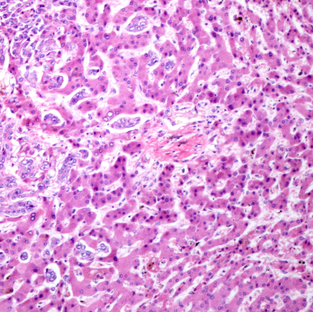Cholangiocarcinoma
( Bile Duct Cancer)
What is Cholangiocarcinoma (Bile Duct Cancer)?
Cholangiocarcinoma, a rare and deadly cancer, originates in the bile duct, a tube that transports bile from the liver to the small intestine. The bile duct system consists of intrahepatic bile ducts within the liver, which merge into the common hepatic duct and combine with the cystic duct from the gallbladder to form the common bile duct. This duct passes through the pancreas and empties into the duodenum. Categorized into three types based on location, cholangiocarcinoma can occur in the intrahepatic, perihilar, or distal areas of the bile duct, each presenting distinct symptoms.
Key Statistics
• Around 8,000 Cholangiocarcinoma cases are reported annually in the United States.
• Cholangiocarcinoma is more prevalent in Asia and the Middle East due to a parasitic infection in the bile duct.
• The majority of Cholangiocarcinoma cases, about 2 out of 3, are diagnosed in individuals aged 65 or older.
• The average age for cancer of the intrahepatic bile ducts diagnosis is 70.
• The average age for cancer of the extrahepatic bile ducts (perihilar or distal cholangiocarcinoma) diagnosis is 72.
• The survival rate for bile duct cancer greatly depends on the cancer’s location and stage at the time of diagnosis.
Symptoms
• Chills
• Clay-colored stools
• Dark urine
• Fever
• Itching (pruritus)
• Loss of appetite
• Nausea
• Pain in the upper right abdomen that may radiate to the back
• Weight Loss
• Yellowing of the skin (jaundice)
Risk Factors
• Diseases in the liver or bile ducts
• Primary Sclerosing Cholangitis
• Cirrhosis
• Bile Duct Stones
• Abnormalities where the bile duct and pancreatic duct meet
• Choledochal Cysts
• Other rare diseases of the liver and bile duct
Other Risk Factors Include
• Aging
• Alcohol
• Diabetes
• Obesity
• Family History
• Thorotrast

Why Is Cholangiocarcinoma Considered a Rare Cancer?
Cholangiocarcinoma is considered a rare cancer due to its low incidence rate, affecting fewer than 40,000 people per year in the United States. As part of the group of rare cancers, it constitutes just over a quarter of all cancer cases. Additionally, since cancer rates in children are generally low, all pediatric cancers are categorized as rare. Cholangiocarcinoma’s classification as a rare cancer is significant, as approximately a quarter of all cancer-related deaths each year can be attributed to rare cancers. Despite ongoing advancements in treatment development, tackling rare cancers like Cholangiocarcinoma can be challenging due to various factors, making research and the discovery of new treatment options particularly complex.
Why Are Rare Cancers Challenging?
Rare cancers present significant challenges for patients, doctors, and scientists alike. For patients, the journey from suspecting something is wrong to receiving a proper diagnosis for a rare cancer can be prolonged and frustrating. It becomes difficult to find healthcare professionals who possess extensive knowledge and expertise in treating that specific rare cancer, leading to uncertainty and confusion about the best course of action. Accessing appropriate treatment may require traveling long distances, separating patients from their support systems and adding additional burdens to their already challenging circumstances.
From the perspective of doctors, treating rare cancers can be perplexing. They may struggle to provide accurate prognoses or detailed information about what patients can expect due to limited data on the particular rare cancer. Lack of comprehensive training on rare cancers may further hinder doctors in developing effective treatment strategies. Additionally, finding specialists or experts who can offer guidance or collaborate on rare cancer cases can be a daunting task.
For scientists, researching rare cancers poses unique obstacles. The scarcity of information on these rare cancers often leaves researchers with limited knowledge to guide their investigations into potential treatment options. The absence of animal or cell models specific to the rare cancer further complicates the research process, making it challenging to test new ideas or therapeutic approaches. Furthermore, the availability of tumor samples from patients with rare cancers may be insufficient, hampering scientific research efforts. Finally, even if researchers have promising ideas for potential treatments, the scarcity of patients with the rare cancer makes it difficult to gather a sufficiently sized cohort for clinical trials, impeding progress in bringing new treatments to fruition.
How We Can Help!
A Rhea of Hope LA plays a crucial role in the fight against Cholangiocarcinoma by providing essential support, raising awareness, and generating funds to make a meaningful impact. Here are some keyways in which A Rhea of Hope LA helps in the fight against Cholangiocarcinoma:
Awareness and Education: The organization raises awareness about Cholangiocarcinoma, a rare and often overlooked cancer, ensuring that it receives the attention it deserves. By educating the public, healthcare professionals, and communities about the disease, A Rhea of Hope LA helps in early detection, understanding symptoms, and promoting proactive healthcare practices.
Support and Resources: A Rhea of Hope LA serves as a vital resource for individuals and families affected by Cholangiocarcinoma. They provide support networks, connect patients and caregivers, and offer guidance throughout the challenging journey of battling the disease. Access to information, counseling, and emotional support can make a significant difference in navigating the complexities of Cholangiocarcinoma.
Fundraising and Research: A Rhea of Hope LA actively raises funds to support research efforts dedicated to advancing the understanding and treatment of Cholangiocarcinoma. By organizing fundraising events, seeking donations, and fostering partnerships, they contribute to groundbreaking research initiatives aimed at improving outcomes, finding new treatments, and ultimately discovering a cure for this rare cancer.
Advocacy and Collaboration: The organization advocates for initiatives that promote awareness, research funding, and improved healthcare services for individuals with Cholangiocarcinoma. A Rhea of Hope LA collaborates with other organizations, medical professionals to amplify their impact, share knowledge, and work collectively towards improved patient outcomes.
Through these comprehensive efforts, A Rhea of Hope LA is at the forefront of the fight against Cholangiocarcinoma, offering hope, support, and resources to those affected while striving to make a lasting impact on the overall landscape of this rare cancer.
Discover the incredible impact of sponsorship for A Rhea of Hope LA in the battle against Cholangiocarcinoma. Learn how your support can make a difference and amplify awareness. Dive into the world of sponsorship.
In the quest for creating positive change, every step forward is fueled by the collective effort of individuals and organizations. This truth resonates powerfully with A Rhea of Hope LA, a nonprofit dedicated to raising awareness and funds for Cholangiocarcinoma.
If you’re wondering how, you can play a crucial role in driving this mission, sponsorship could be your answer.
With that said, here are a few reasons why you consider becoming a sponsor for A Rhea of Hope LA!
1. Why Sponsorship Matters
Sponsorship for A Rhea of Hope LA is more than just a financial contribution. It’s a commitment to standing with those affected by Cholangiocarcinoma and making a tangible impact on their lives. As a sponsor, you’re not only supporting a worthy cause but also joining a community of changemakers who believe in the power of unity.
2. Amplify Awareness
By associating your brand with A Rhea of Hope LA, you’re leveraging an incredible opportunity to amplify awareness about Cholangiocarcinoma. This partnership gives you a platform to reach a broader audience, sparkling conversations and igniting curiosity about a rare and often overlooked cancer. Through joint efforts, we can shed light on this crucial issue, fostering a culture of understanding and compassion.
3. Drive Real Change
Sponsorship directly contributes to funding research, patient resources, and initiatives aimed at combating Cholangiocarcinoma. Your support translates into tangible outcomes–more research breakthroughs, better patient support, and increased awareness leading to early detection. Together, we can drive real change, offering hope to those in need and working towards a brighter future.
4. Create Lasting Impact
Sponsorship leaves a lasting impact on the lives of individuals and families affected by Cholangiocarcinoma. Your support provides resources, advocacy, and a sense of community that can be life changing. Moreover, your brand becomes synonymous with making a difference, establishing a legacy of compassion and commitment.
5. Join the Movement
The importance of sponsorship for A Rhea of Hope LA cannot be overstated. It’s an invitation to join a movement that’s making waves in the fight against Cholangiocarcinoma. Your sponsorship isn’t just a transaction–it’s a partnership that fuels hope, resilience, and progress.
6. How You Can Get Involved
Are you ready to be part of something greater? Reach out to us and explore the various sponsorship opportunities available. Join us in our mission to raise awareness, support patients, and ultimately, contribute to the eradication of Cholangiocarcinoma. Together, we can create a world where this devastating cancer is a thing of the past.
Sponsorship for A Rhea of Hope LA isn’t just about financial support; it’s about making a transformative impact on lives, fostering awareness, and driving change. Join us today and be a beacon of hope for those fighting against Cholangiocarcinoma.
If you are interested in becoming a sponsor for our upcoming events, click the link below to see our sponsorship opportunities.

